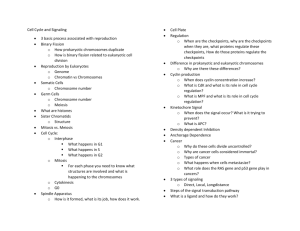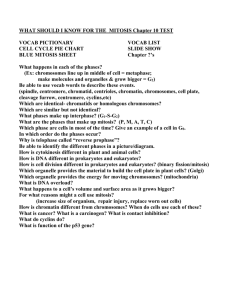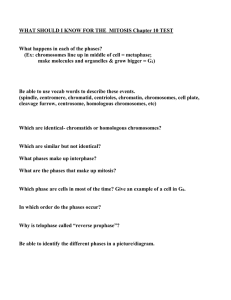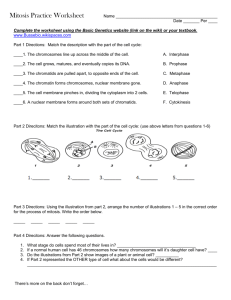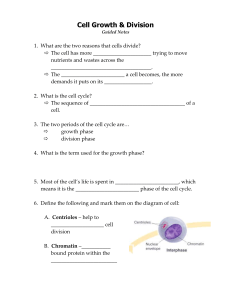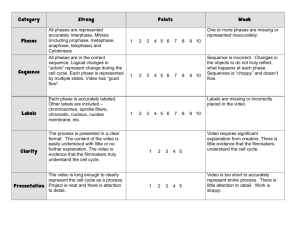How Cells Divide
advertisement
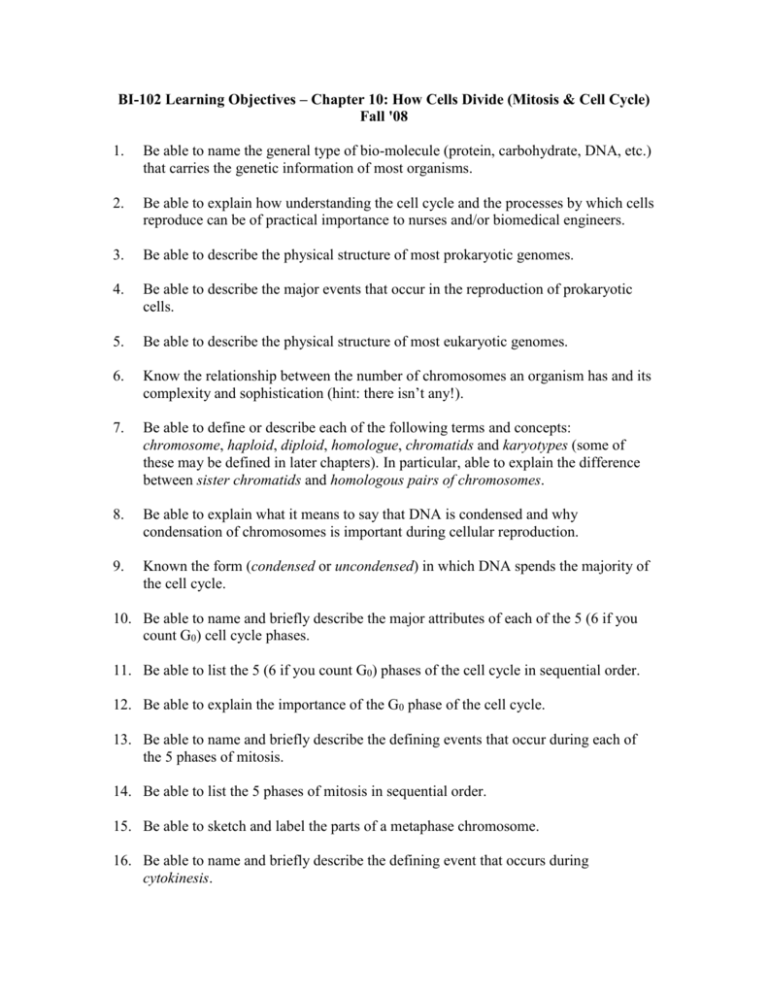
BI-102 Learning Objectives – Chapter 10: How Cells Divide (Mitosis & Cell Cycle) Fall '08 1. Be able to name the general type of bio-molecule (protein, carbohydrate, DNA, etc.) that carries the genetic information of most organisms. 2. Be able to explain how understanding the cell cycle and the processes by which cells reproduce can be of practical importance to nurses and/or biomedical engineers. 3. Be able to describe the physical structure of most prokaryotic genomes. 4. Be able to describe the major events that occur in the reproduction of prokaryotic cells. 5. Be able to describe the physical structure of most eukaryotic genomes. 6. Know the relationship between the number of chromosomes an organism has and its complexity and sophistication (hint: there isn’t any!). 7. Be able to define or describe each of the following terms and concepts: chromosome, haploid, diploid, homologue, chromatids and karyotypes (some of these may be defined in later chapters). In particular, able to explain the difference between sister chromatids and homologous pairs of chromosomes. 8. Be able to explain what it means to say that DNA is condensed and why condensation of chromosomes is important during cellular reproduction. 9. Known the form (condensed or uncondensed) in which DNA spends the majority of the cell cycle. 10. Be able to name and briefly describe the major attributes of each of the 5 (6 if you count G0) cell cycle phases. 11. Be able to list the 5 (6 if you count G0) phases of the cell cycle in sequential order. 12. Be able to explain the importance of the G0 phase of the cell cycle. 13. Be able to name and briefly describe the defining events that occur during each of the 5 phases of mitosis. 14. Be able to list the 5 phases of mitosis in sequential order. 15. Be able to sketch and label the parts of a metaphase chromosome. 16. Be able to name and briefly describe the defining event that occurs during cytokinesis. 17. Be able to name the 3 main checkpoints that occur during the cell cycle. 18. Be able to describe the conditions that are required for cells to pass through each of the 3 main checkpoints that occur during the cell cycle. 19. Be able to name two groups of proteins that are involved in the regulation of the cell cycle. 20. Be able to explain (in general terms, not in detail) what growth factors are and what role they play in regulation of the cell cycle. 21. Be able to explain the difference between proto-oncogenes and tumor-suppressor genes and to name an example of each in humans.


